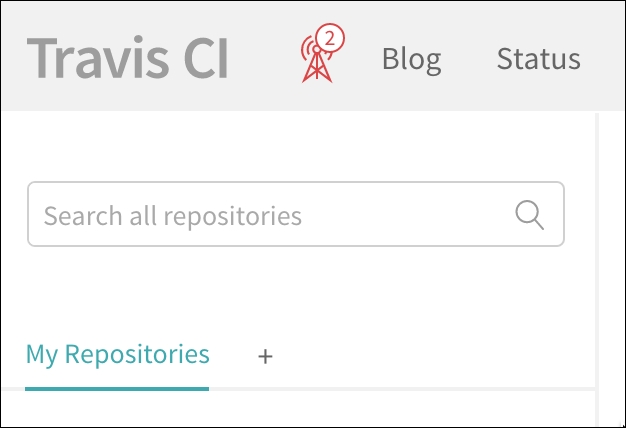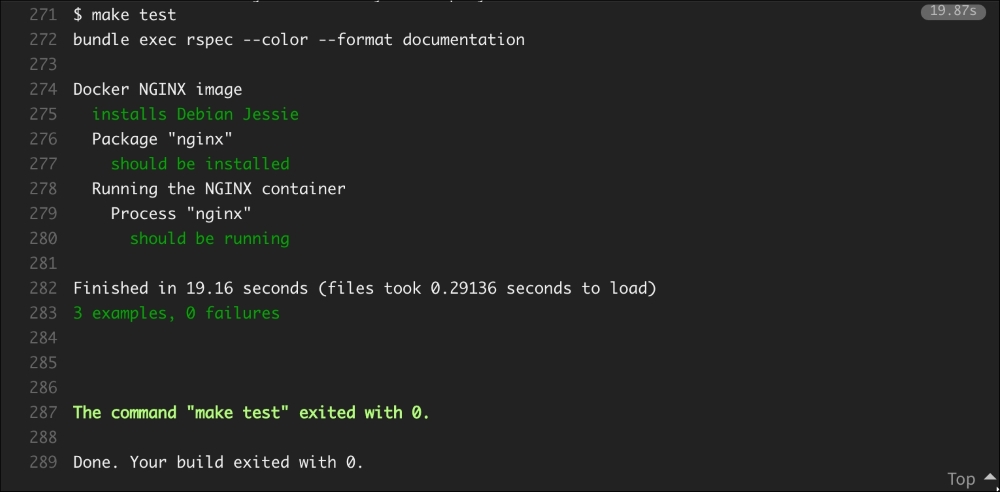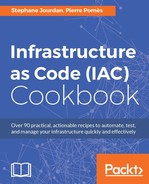As people working with code and writing tests for it, there's no reason not to see those tests executed in CI. The same way every program has language requirements, ours need to be able to build Docker containers and execute some Ruby code. Being able to fully execute a whole pile of tests automatically, upon any code check-in, is a major quality improvement step. No one can test each and every possibility and regression and special cases from months or maybe years ago. It's true in software code, and it's the same in infrastructure code as well. Let's find an elegant and automated way to execute our infrastructure code tests in CI systematically so this could be another dot connected to the bigger map.
To step through this recipe, you will need:
- A working Docker installation
- A free Travis CI account
We'd like our RSpec integration tests to be executed automatically each time we commit a change on Git. This is the perfect job for a CI system, such as Jenkins, the Circle CI, or the Travis CI. Our only requirement is that the CI platform should build and execute Docker containers and run RSpec tests. Docker support is good with Travis, and it works out of the box. Jenkins would work equally well behind the firewall when properly configured, like most other CI systems. Here's how to configure our CI platform to automatically execute tests on a new commit:
- Create a free account for the Travis CI or use your own (https://travis-ci.org/).
- Click on the + button to add a new GitHub repository:

- Enable the watching of the repository by Travis:

- Now add a configuration file for Travis named
.travis.ymlat the root of the repository. This file can contain a lot of information to do many things, but for now, it should simply tell Travis that we need a Ruby environment in a recent Linux distribution running Docker. Also, it should simply executemake testforMakefile. In our case, this command will execute the RSpec tests:sudo: required language: ruby dist: trusty services: - docker script: make test
- Commit and push this file and it will trigger our first test on Travis:
$ git add .travis.yml $ git commit -m "added travis.yml" $ git push
- Navigating back to the Travis CI, we can see the tests begin:

- A few seconds later, the tests pass successfully, assuring us the build is consistent with our expectations. Travis even gives easy access to the output of the commands:

We just initiated new steps for integrating automated tests in our workflow. This is getting increasingly important as every project or team grows, and it's getting riskier to ship untested containers into production.
As with every CI system, the final step after the tests are completed is to package, ship, and deploy the containers. As exciting as this step is, it's also unfortunately far beyond the scope of this book.
